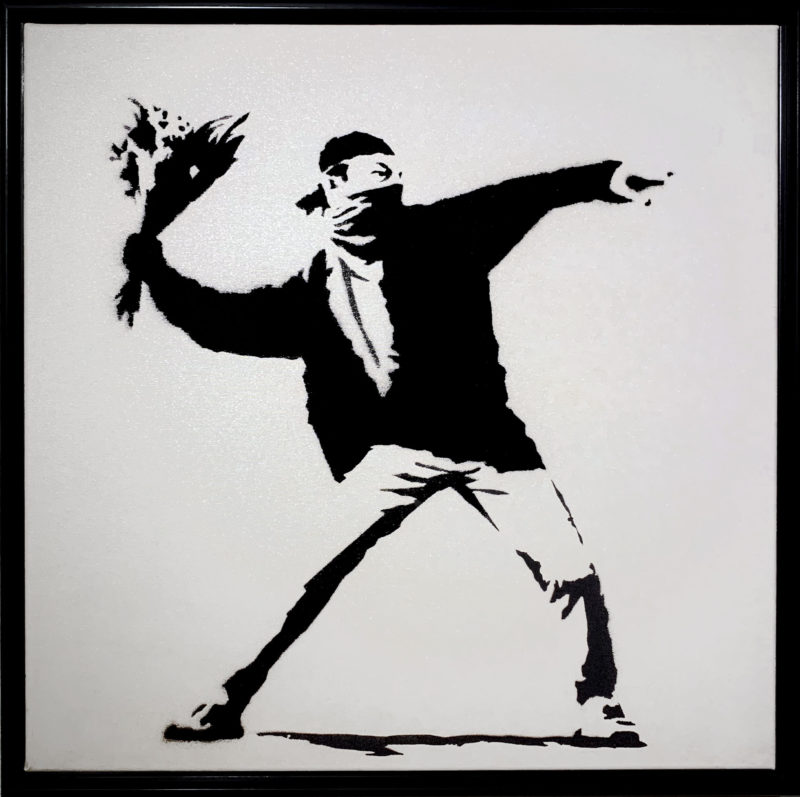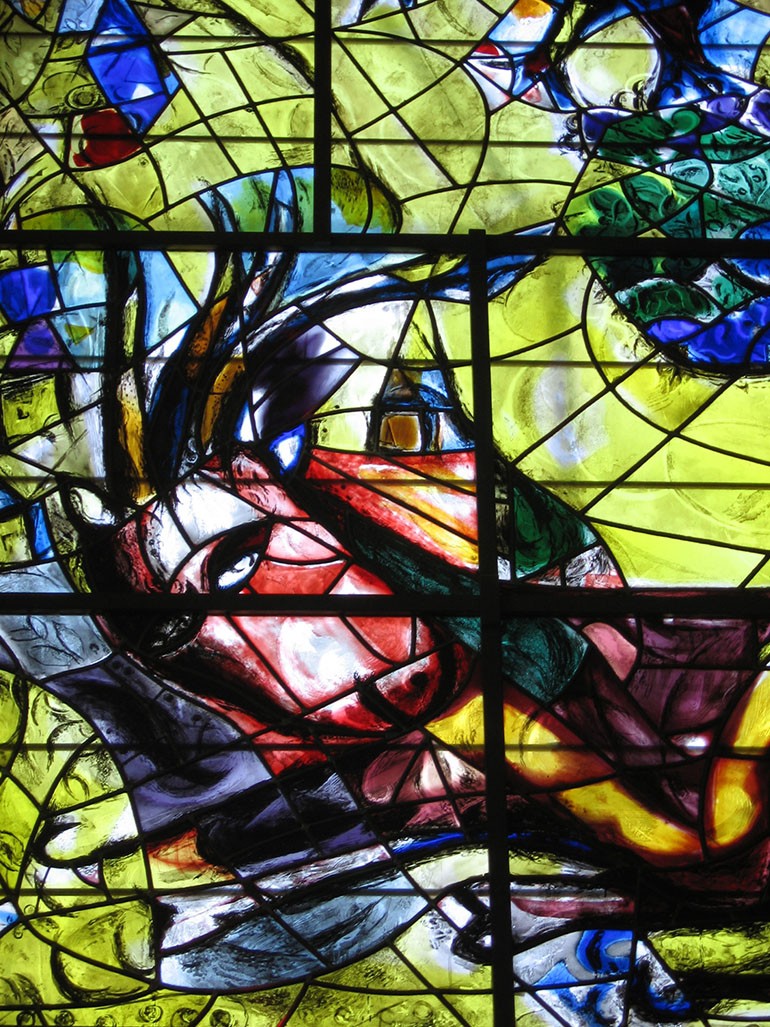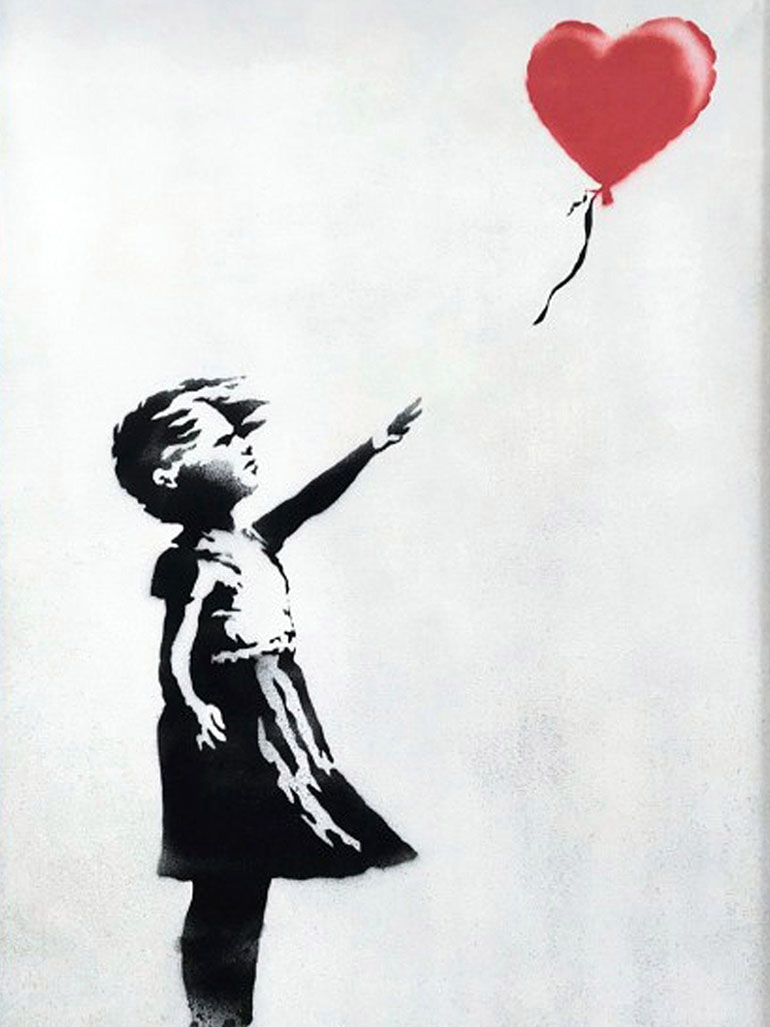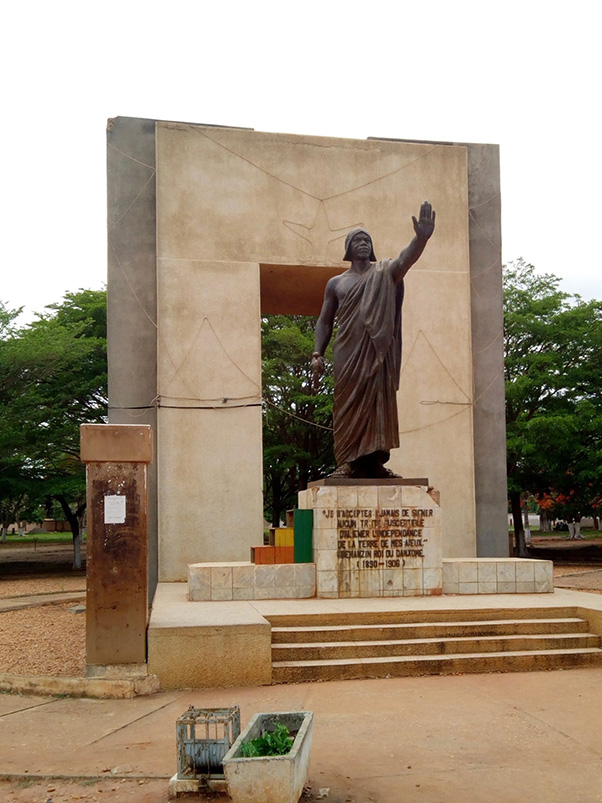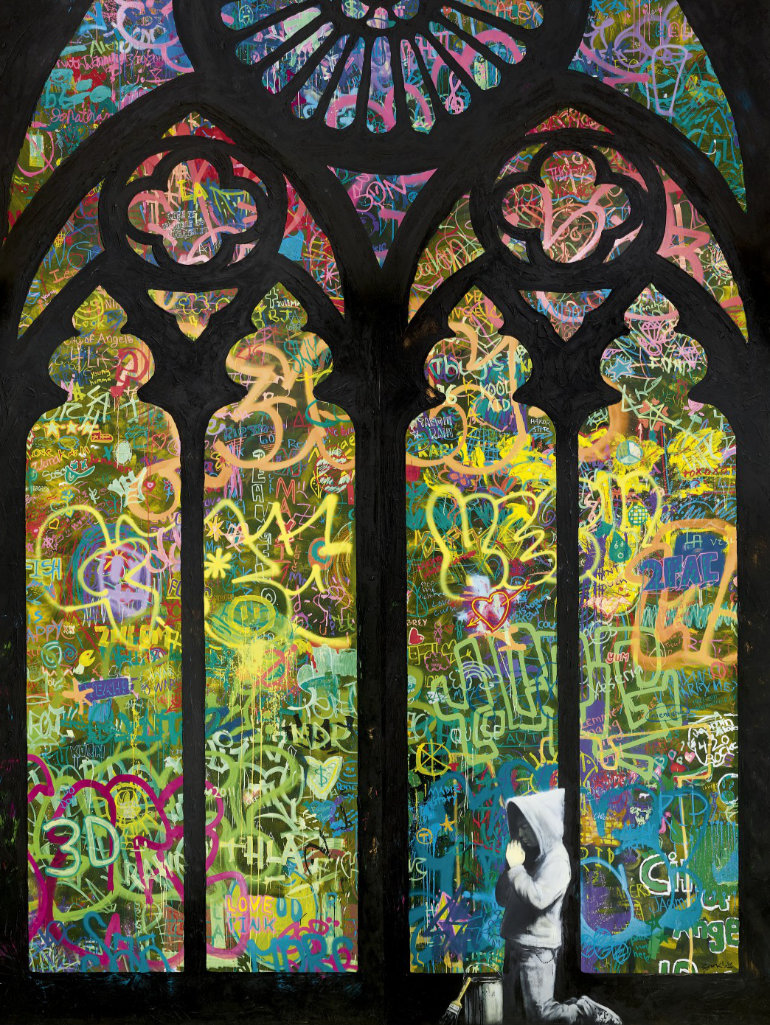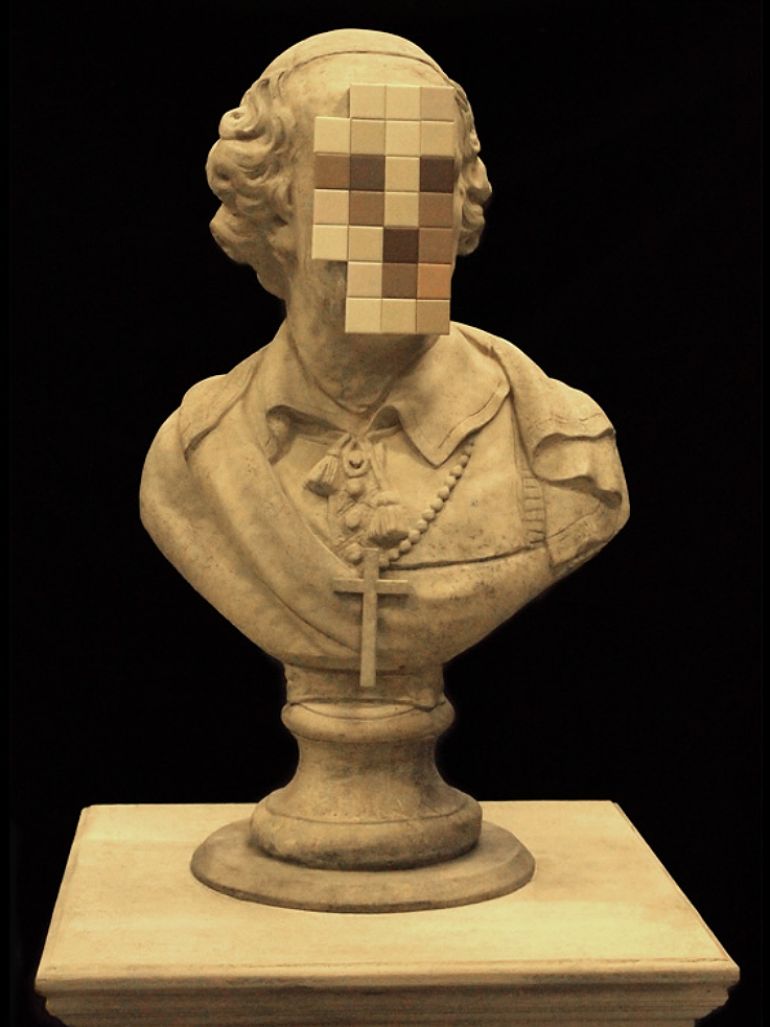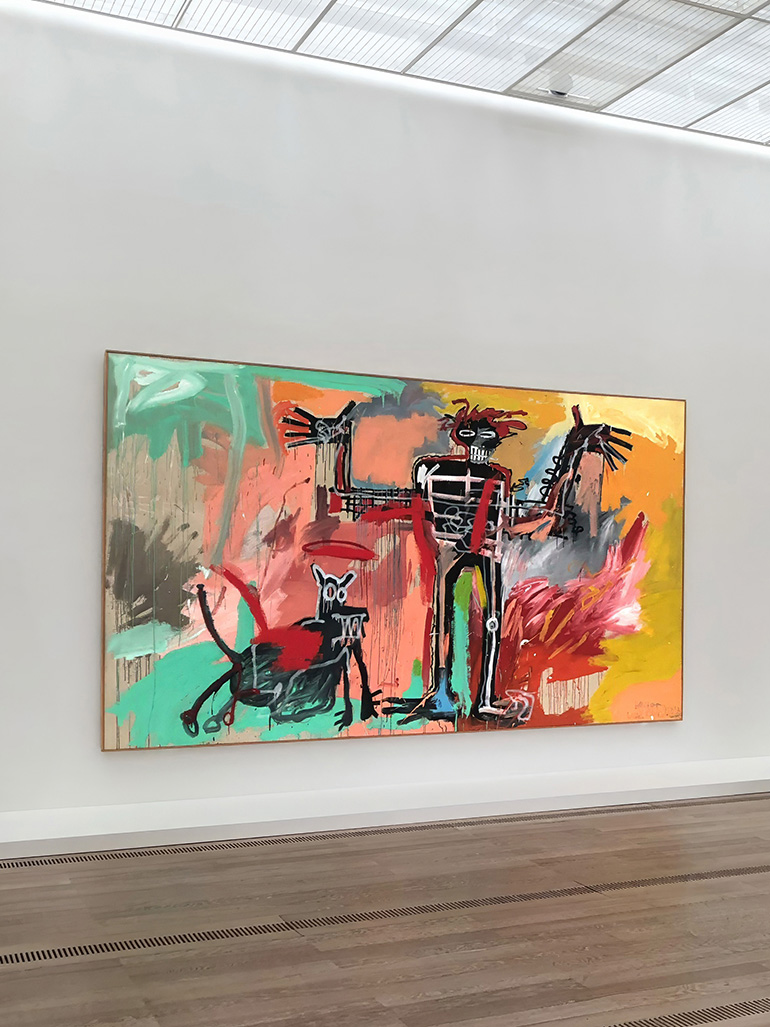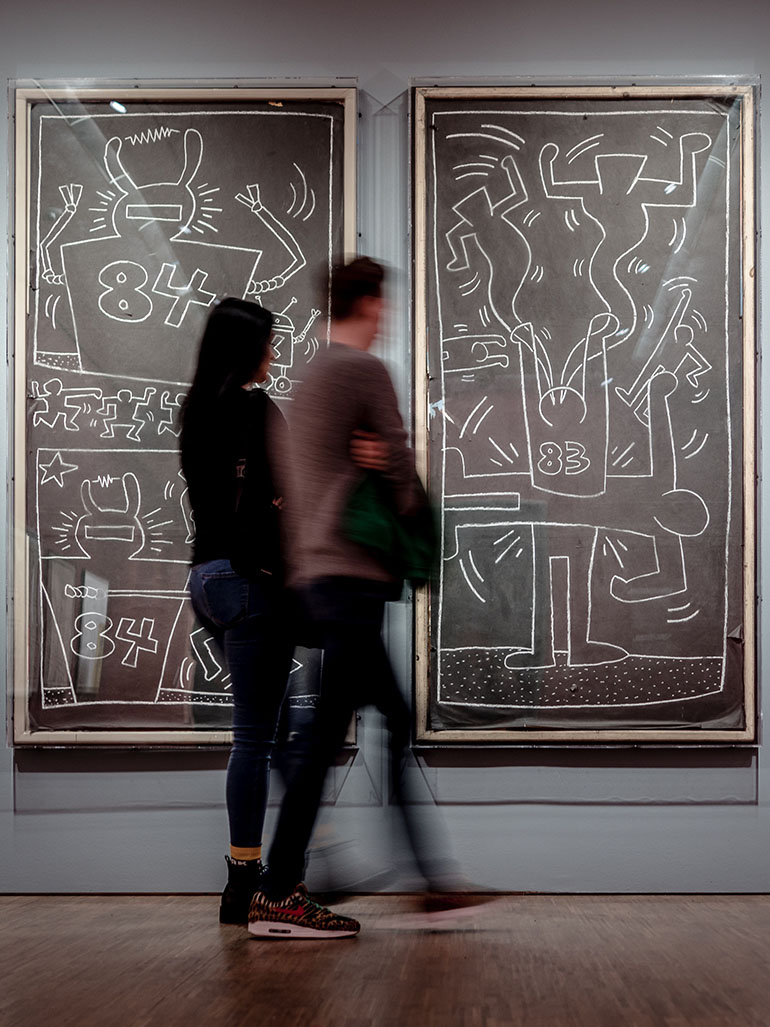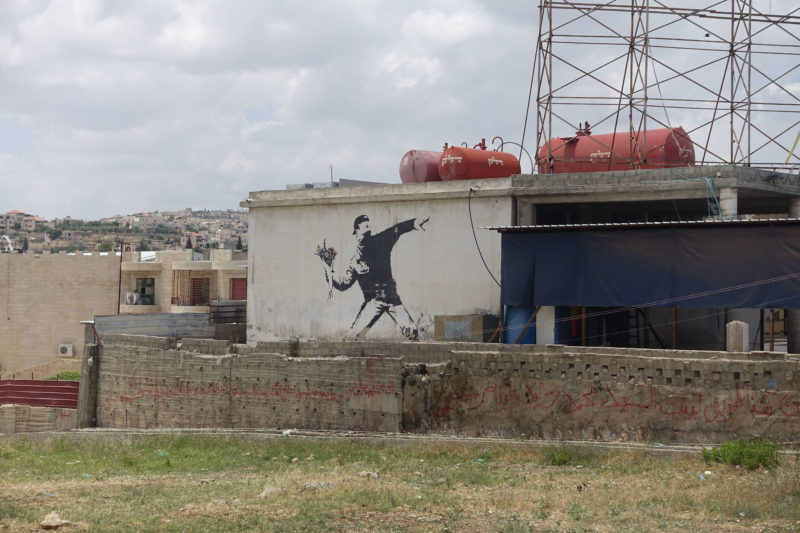
Rage, the Flower Thrower
Rage, the Flower Thrower or Love is in the Air is one of the most iconic stencils by Banksy 1. It shows a masked Palestinian throwing a bouquet of flowers.
Banksy is known for displaying his works out in the open for the public to view, in places such as walls in the case of Rage, the Flower Thrower. Still, most of his public paintings are often resold, even if it means removing the wall they were painted on.
What does the work show?
The drawing first appeared on a wall on the side of a garage on the highway from Beit Sahour opposite Citroen/Peugeot car dealership in Jerusalem. The man in the painting is wearing a scarf and a baseball cap and appears to aim the flowers at someone(s) in rage.
The man and the flower wrapping are made in black and white. The flowers and the stem protruding from the wrapper are done in color. The portrait is reminiscent of the images from the street and campus riots of the 1960s. The anger and frustration can be seen in the man’s posture as he tries to bomb the establishment with flowers.

In 2005 a gay parade was staged in Jerusalem, but the participants were ambushed by protestors who stabbed three and injured many scores of others. According to many commentators, the black and white man in the image represents a protestor or rioter.
His gears are typically associated with violence. There are a bandana and a cap worn backward to conceal the identity, while the flowers are in vivid colors, which could be interpreted as a metaphor for the gay pride flag. The flowers themselves signify hope for peaceful resolution of conflicts.
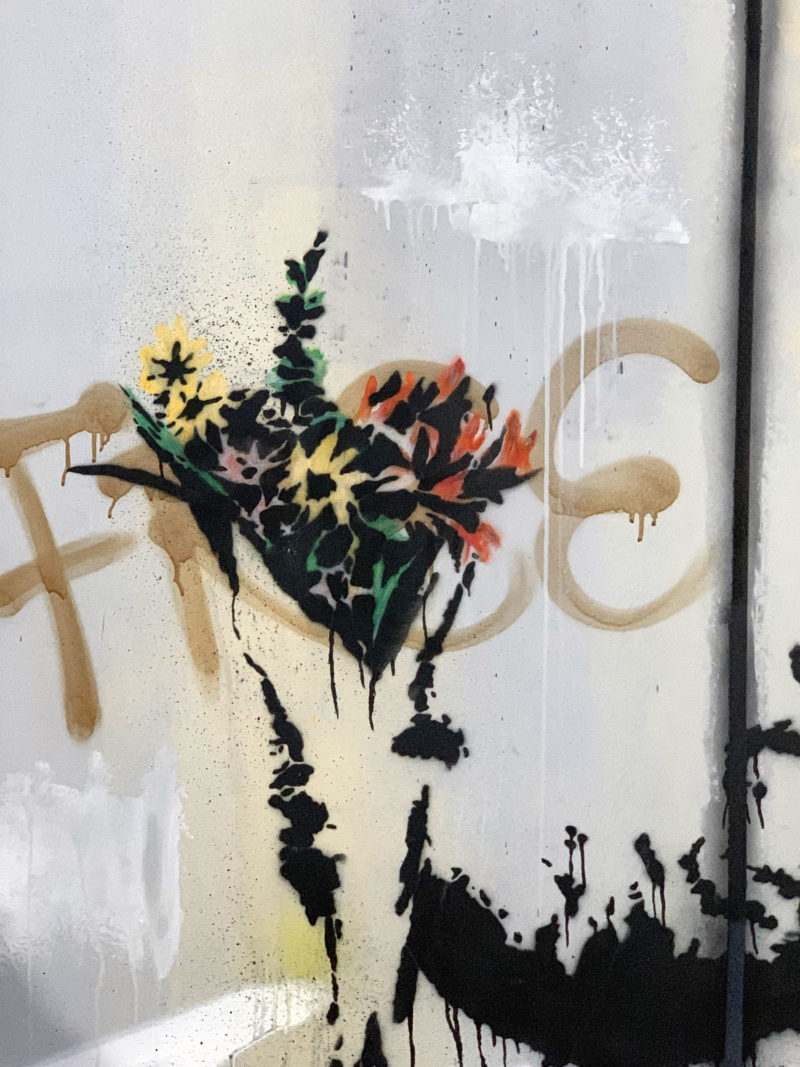
The location
Banksy painted the work on the 760 kilometers wall that separates Israel from Palestine, which the artist said 23 essentially turns Palestine into the world’s largest open prison.
In his book Wall & Piece (War and Spray) in 2005, while he was painting the wall with this mural, one of the residents told him 45:
We don’t want it to be beautiful, we hate this wall. Go home.
Address: Ash Salon Street, Bethlehem, West Bank
For Google Maps: الحايك و الصوص المحروقات
The meaning
The facial expression and the man’s posture in the mural tellingly suggest that there is a violent intent. However, by substituting a rock, a Molotov cocktail or a bomb with a bouquet, Banksy advocates for peace instead of violence. The location itself is prominent to the message behind the image.
Many associated this mural with those events, but it can also be inspired by the violent unrest in the Middle East. However, Banksy is known to be a pacifist and an anti-war activist 6; several events could have influenced the mural.
The bouquet in this image symbolizes, in addition to peace, life, and love may also be associated with the commemoration of lost lives during the old era of religious conflict. The piece is an excellent example of Banksy’s use of art to convey messages of social significance.
Rage, the Flower Thrower is one of the most important and sought-after works of art by Banksy. Since its production, it has been reproduced on phone covers, posters 7, t-shirts, and many other types of merchandise. The image is also on the cover of Banksy’s iconic book Wall and Piece produced in 2005.
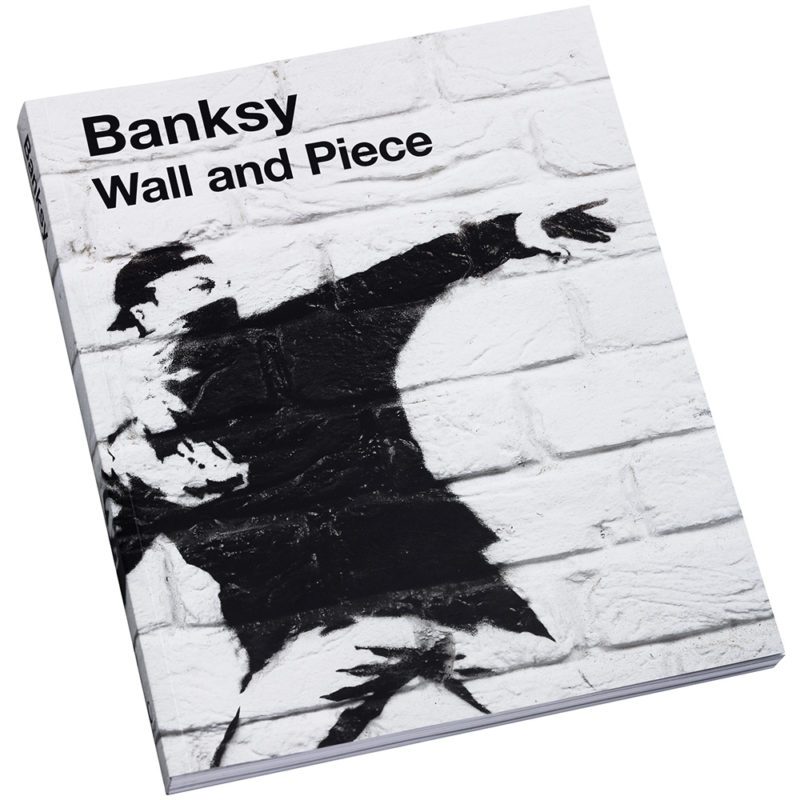
Rage, the Flower Thrower is a powerful piece that conveys important messages to the public through the use of graffiti. The simplicity of the image also makes the work effective as it relays the point straight away. Banksy’s bold use of black and white indicates his visual skills, which draws the viewers’ attention right away.
The artist has been quoted in some articles saying how he started using stencil art. According to the artist, stencil art was a faster way for him to do his work after having some close calls during his early career days, with authorities nearly catching him.
Like many of his other works, Rage, the Flower Thrower draws inspiration from political and social situations and always wants the public to be aware of what is happening as some occurrences might pass over the general public. Banksy uses these circumstances to not only make himself known but also to get his pieces of work out there and educate the public about what is happening around the world.
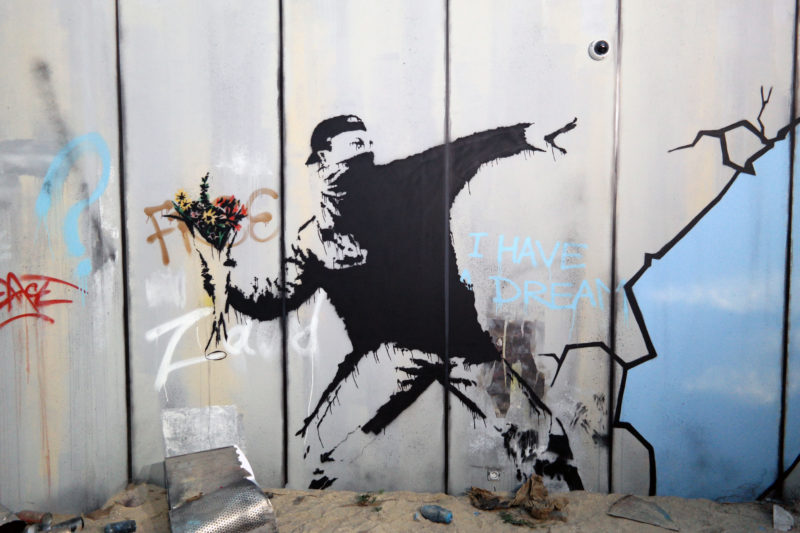
Other versions
Banksy has created several versions of the mural on canvas and was even released on the red background with a version of 150 Rage, the Flower Thrower (Love is in the Air) signed prints, as well as 500 unsigned prints. It is believed that the floral replacement in the image was inspired by the poem “Wage Peace 89” by Judyth Hill.

Flame Thrower NFT
NFT wave has swept the world of Blockchain. In 2021 alone, 28.6 million wallets traded NFTs, up from half a million the previous year. Short for a non-fungible token, NFTs are tokens that can be used to represent ownership of unique items, allowing us to tokenize things like collectibles such as artworks.
Speaking of art, Banksy’s iconic Flame Thrower is one of the most popular pieces of art to be tokenized into NFT. Love Is in the Air (2005) was acquired by Particle for $12.9 million at Sotheby’s 1011 in May 2021. Particle is a non-fungible tokens platform co-founded by former Christie’s post-war and contemporary art chairman Loïc Gouzer. The platform then sub-divided the work into 10,000 NFTs, each signifying a unique section of the artwork.

The CEO of Particle said in a press release 1213:
We are attempting something completely new by devising a way for humanity’s greatest masterpieces to be preserved physically, but also to allow a wider population to hold digital ownership in these works of art, all the while benefiting from unprecedented access to the art world.
The initial offering of the painting started on January 10 and ran through January 14, 2022. It enabled collectors an opportunity to buy a piece of the artwork for about $1,500. In the aftermath of the initial offering (ICO), the tokens entered the secondary market across NFT platforms, where the price of each Particle may change in value.
The physical painting is with the Particle Foundation, a non-profit arm of Particle that is tasked with maintaining, preserving, and touring the work to let collectors see the pieces they can rightfully claim to own.
In addition to the physical version of the painting, once the auction was completed, the Particle Foundation also received ten symbolic NFTs from the 10,000 that were fractionalized. This prevents a single buyer from owning all the pieces of the tokens and thus claiming possession of the physical painting.
Particle CEO Harold Eytan added 1415:
The whole point of this project is to build the greatest collection in the world, owned digitally by the community, and preserved physically by the foundation.
According to the CEO, Flame Thrower is only the first piece of art the platform will fractionalize and auction off. Particle’s main mission 1617 is to “acquire some of the most important fine art masterpieces in the world, and to put them in the hands of the Particle community”.

Conclusion
By the message relayed by this piece and the other events that can be linked to it, Banksy created an essential portrait. He has effectively united people with different opinions due to the different ways to interpret this artwork. Banksy has done so, however, in a more controversial 18 way than usual. Many do not agree with pacifism and its location in Jerusalem, where there are a high military and gun presence.
Nevertheless, this piece forces the viewers to consider why they would potentially want to hurl something harmful towards a group of other human beings if they could, instead, toss something useful their way. It makes everyone who sees it consider the consequences of destructive actions by swapping this thought with what could happen if constructive action was taken instead. Rage, the Flower Thrower reframes the approach to dealing with evil, postulating that the way out can sometimes come from good.
